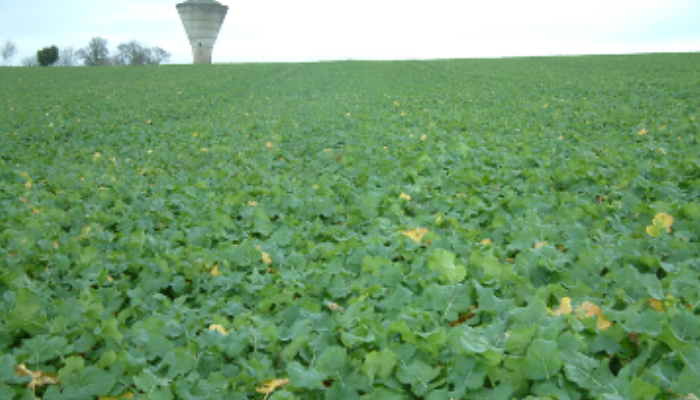24 August 2023
Tillage update: Focus turns to winter oilseed rape

Sowing winter oilseed rape this season? Shay Phelan, Teagasc Tillage Specialist, offers advice on sowing winter oilseed rape, including a focus on establishment, seeding rates and variety selection.
Drilling of winter oilseed rape is now underway, although it is unlikely that the same overall area nationally, circa 19,000ha, will be drilled this year as in 2022.
When deciding on where to drill, crop rotation must be the first deciding factor. We have seen in 2022, when rotations are tight or where other brassicas, e.g. brassica cover crops were in the rotation, problems such as clubroot and/or sclerotinia have been an issue.
Optimum sowing date is the second half of August, but growers in the south have achieved good yield from crops sown in early September into good seedbeds. Crop establishment trials in Oak Park have shown that plough-based, min-till and strip-till (including sub-soiler leg type) systems were all capable of achieving high yields, but ensure there is not a compaction problem prior to choosing a shallow system. Wider spacings did restrict yield in the Oak Park trials.
Phosphorous and potassium requirements can be supplied by organic manures, as oilseed rape is an efficient user of nitrogen supplied by organic manures. Application rate of organic manures should be based on recent soil test report.
Seed rate and varieties
The target plant population (in the spring) is 30-40 plants/m2, evenly spaced across the field. This spring population will allow sufficient light to reach the base of the canopy and encourage branching and thus maximising pod numbers. Crops with very high plant numbers tend to produce very thick flowering canopies, which can reflect and intercept up to 60% of the incoming light, reducing the number of seeds per pod. Most of the varieties available this season are hybrid and Teagasc trials have shown that there is no benefit of sowing in excess of 50 seeds/m2 .
Clearfield varieties, denoted with the prefix CL, can be sprayed with specific Clearfield herbicides (Clearanda), which will control brassica weeds. Clearfield varieties are lower yielding than conventional varieties, but can open up additional land for oilseed rape.
The Department of Agriculture, Food and the Marine Winter Oilseed Rape recommended list contains the most up-to-date yield and agronomy information for varieties grown in Irish conditions.
Herbicide
Early weed control is important for oilseed rape, and control of broad leaved weeds will generally be most successful with pre-emergence herbicides. Grass weeds, particularly volunteer cereals, are very competitive, therefore early control is essential where populations are high. Pre-emergence herbicides (e.g. Katamaran Turbo, Butisan) offer good early season control, but knowledge of the weed spectrum of each individual field is necessary, as each herbicide has its own strengths and weaknesses. Grass weeds or volunteers can be controlled post emergence with the various graminicides.
Pests
Many people are wary that the wet summer will increase the risk of slug damage, but this may be difficult to predict unless the field has a history of slug damage. Keep an eye out for early signs of damage and place traps using museli or layers pellets under a sheet of plastic or a slate. If you see more than one slug per trap then you should consider treatment. Rolling after drilling will help as will stubble cultivation before drilling if you have time.
Cabbage Stem Flea beetle generally isn’t a problem in Ireland, unlike the UK where it is a significant problem, as our soils are generally moister. This helps with establishment and early growth, so the crop grows away from the vulnerable period quickly. However, if you see the typical shot holes in the leaf just keep an eye on them. In the UK, they will consider treatment if 25% or more of the leaf area is consumed at the cotyledon stage (this rarely happens here) with a pyrethroid insecticide.
Tillage Edge Podcast
Shay Phelan and Ciaran Collins, Tillage Specialists in Teagasc, are on this week’s Tillage Edge podcast to explain more. Ciaran says that the three crop rule is similar to other years and growers should ensure they get the percentage of each crop correct.
Meanwhile, Shay gives an update on the new rule around crop rotation at parcel level. Shay says that each parcel must have a different crop in a parcel every four years, so long-term continuous cereals is difficult.
A date for your diary is the Crops Forum on Friday, September 8th in the Kilashee Hotel Naas. For more details, click here.
For more episodes and information from the Tillage Edge podcast, produced on behalf of Teagasc by LastCastMedia.com, visit the show page.
